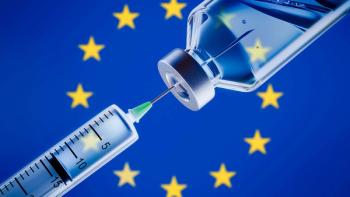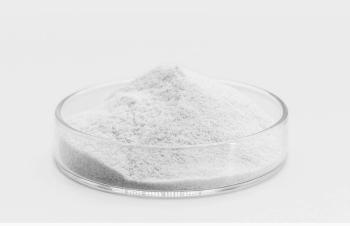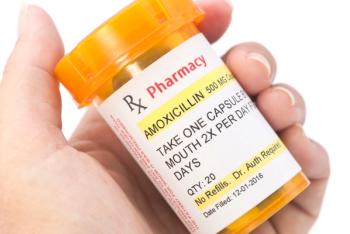
Patentability Considerations for Antibody-Related Inventions
Stringent patentability requirements present a challenge to obtaining broad-based antibody claims, so companies should develop a strategy based on multiple reinforcing layers of protection.
Rapid advancements in immunotherapies have made patents in this field more important than ever and therapeutic antibodies now play a dominant role in the pharmaceutical marketplace. Each year, a significant portion of the world’s top selling drugs are antibody-based and the global market for such drugs is expected to exceed US $114 billion by 2022. The number of patents issued to antibody-based therapeutics in the United States and Europe has been increasing steadily, as shown in Figures 1 and 2. In 2019 alone, more than 2000 antibody-related patents were issued in the US and more than 1000 such patents were issued in Europe.
While patent coverage for immunotherapeutic products is crucial for commercial protection, the scope of patent claims has become restricted, due to the wealth of accumulated ‘prior art’ and increasingly stringent patentability requirements. Nevertheless, pursuit of different types of patent claims (e.g., directed to compositions of matter, formulations and/or dosage regimens, and/or methods of use [both therapeutic and diagnostic]) offers a strategy for building multiple, reinforcing layers of patent protection. This article will assess the major challenges associated with obtaining patent coverage for each of these categories of claims in the US and other major global markets.
Antibody compositions
In the US, a major obstacle to obtaining broad antibody composition coverage is the requirement under 35 US Code (USC) §112, that a patent specification “contain a written description of the invention” (1). To satisfy this requirement, the applicant must clearly convey that he or she “had possession of” the invention as of the filing date (2). As recent decisions have shown, merely “drawing a fence around a perceived genus” is not sufficient to describe it. Instead, applicants must prove that they have conceived of and described a sufficient number of representative species falling under the full scope of the genus.
Consider a landmark 2014 case (3) involving AbbVie, Janssen, and Centocor, in which patent claims for anti-interleukin 12 (IL-12) antibodies were invalidated. The claims at issue recited only functional features without any structural limitations for the antibody. The patent specification described over 300 anti-IL-12 antibodies, the structures all of which were closely related. However, the claims also encompassed structurally unrelated antibodies (e.g., the accused product). Thus, the representative species disclosed in the patent were not sufficient to support the full breadth of the genus.
As the AbbVie decision shows, antibody composition claims without structural limitations (e.g., claims that define an antibody based on its functional properties or epitope-binding site), can make it difficult for an applicant to obtain broad (e.g., genus) generic patent coverage and to defend existing broad patents if they are challenged.
Narrower, sequence-based claims have been more successful and become more commonplace. These claims generally recite at least the six variable domain (VH and VL) complementarity determining region (CDR) sequences. Additional species claims reciting full VH and VL sequences, as well as full heavy and light chain sequences, can provide supplemental coverage.
Another way to meet the ‘written description’ requirement is by describing the common structural features shared by a genus that impart a particular claimed function. However, given the highly diverse nature of antibody structures, this approach is not easily achieved in the context of antibody claims. In some cases, an alternative way to pursue claim breadth is by including a percent identity limitation to a specified sequence (e.g., at least 95% identity to a specified VH or VL sequence). This approach, however, still requires the description of a representative number of species that fall within the scope of the claim. It also typically requires disclosure of methods that allow for the generation of other species falling within the claim.
Demonstrating non-obviousness in the US vs. inventive step in the EU
Recitation of sequence limitations in antibody claims also supports the US patentability requirement of non-obviousness, given the US Patent and Trademark Office’s (USPTO’s) current recognition of ‘structural non-obviousness’. Typically, the USPTO considers claims patentable if they are drawn to an antibody defined by amino acid sequences which differ from prior art antibodies. This assumes, however, that the sequence differences were not the result of ‘routine optimization’ (e.g., using well known modifications), regardless of the properties of the claimed antibody as compared to the prior art antibodies.
This structural approach to antibody non-obviousness in the US differs from the corresponding ‘inventiveness’ inquiry in Europe which generally requires that applicants demonstrate that the claimed antibody has unexpected and/or superior properties compared to the closest prior art (e.g., known antibody), regardless of structural differences. However, demonstrating unexpected or superior properties can be a particularly high hurdle to overcome in Europe without comparative data. Accordingly, whenever possible, comparative data should be obtained, and preferably included in the patent specification, to support patentability of antibody claims in Europe.
Finally, major Asian markets (i.e., Japan, China, and South Korea) tend to limit patentable subject matter to what has been exemplified in the patent application. Thus, focusing on both structural elements (for the US) and supporting data in the specification should lead to broader coverage in the major Asian markets.
Given the extensive worldwide prior art disclosing various antibodies, formulations, and dosages, non-obviousness typically is the primary hurdle to patentability for claims that pertain to new antibody formulations or dosage regimens. The USPTO tends to view the elements of these claims as having been arrived at by ‘routine optimization.’ To counter this argument, it is important to build evidence of non-obviousness, such as a lack of reasonable expectation of success in combining the features of a new formulation or dosage regimen into the prosecution record.
Additionally, or alternatively, secondary indicia of non-obviousness, such as unexpected results, improved properties, long-felt but unsolved need, industry accolades or commercial success, may be needed. When relying on such secondary indicia, it is important that there be a nexus between the evidence relied upon and the scope of the claim (4). For example, if a range of values is claimed, such as for a dosage or concentration range, then evidence of non-obviousness across the full claimed range is needed, not simply for one or two values within the range. Similar considerations are particularly relevant to establishing inventiveness in Europe and the major Asian markets.
Methods of treatment and diagnosis
New methods of use, for either novel or known antibodies, also represent a significant opportunity for patent protection. New uses include treatment methods that involve administration of the antibody, as well as diagnostic methods, which are generally performed in vitro. For such method claims, non-obviousness, written description, and enablement can be challenging aspects of patentability, especially in view of extensive worldwide prior art involving the use of antibodies in a broad variety of therapeutic and diagnostic applications.
For methods that employ novel antibodies, patentability can be based on antibody structure and properties, as discussed previously. For methods that employ known antibodies, however, evidence is often needed to establish a lack of motivation and/or reasonable expectation of success for the claimed method in view of the prior art. Additionally, or alternatively, secondary indicia of non-obviousness may be required.
Moreover, for methods that recite treatment of a broad class of disease (e.g., all cancers), data (e.g., from disease models) which support a sufficient number of representative species may be necessary to meet written description and/or enablement requirements. The level of predictability in the art influences whether or how much supporting data are needed (5). However, in-vivo clinical data are not necessary if a reviewer with ordinary skill in the art would not doubt that the specification is otherwise enabling for the claimed invention.
Furthermore, claims relating to use of antibodies in diagnostic applications (e.g., to detect biomarkers) must be drafted to ensure that they meet the patent eligibility requirement of 35 USC §101. Under this statute, natural products and/or laws of nature are judicially excepted from patentability unless the claims recite an additional element(s) that amounts to significantly more than the judicial exception (6,7). For example, the USPTO views the correlation of biomarker expression with a disease, or use of that correlation for diagnostic purposes, as a law of nature, absent additional element(s) in the claim that amount to ‘significantly more’ than the law of nature. Patent eligibility is achieved if the claim, as a whole, integrates the recited law of nature into a practical application, such as treatment of a particular disease in a defined manner (8).
While there is no direct equivalent to 35 USC §101 in Europe and Asia, methods of treating the human body are not patent eligible. However, method of treatment claims can be rewritten as ‘medical use’-type claims, which are permissible. Patentability considerations of such medical use-type claims in these jurisdictions are similar to considerations for treatment methods in the US.
Inter partes review and post-grant review proceedings
Results of US Inter Partes Review (IPR) proceedings involving antibody-related patents provide insight into the strength of such patents against third-party challenges. A petition for IPR must be based on prior art patents or printed publications, and may include priority challenges. If the USPTO determines that the petitioner has shown a reasonable likelihood of prevailing with respect to at least one claim challenged, then the IPR will be instituted.
While the majority of petitions filed since 2013 pertaining to antibody-related patents were not instituted (58 of 89, or 65% of petitions), those that were instituted (31 of 89, or 35% of petitions) led to invalidation of all patent claims in 77.5% of cases. In only two cases (2 of 31, or 6.5% of the total) all patent claims were maintained.
Five IPRs (16%) resulted in a mixed outcome, with some claims invalidated and other maintained. Thus, if faced with an instituted IPR, the patent owner, on average, is most likely to lose all or at least some of its claims. This underscores the importance of building a strong prosecution record, including making of record all potentially relevant prior art, to increase the likelihood of avoiding institution (or, if instituted, prevailing) in IPR proceedings.
Petitions for IPRs were denied, for example, in patents claiming methods of using a known antibody for treating a new indication using a new dosing regimen, where this combination was found to be nonobvious, as well as in patents claiming new formulations, in which the record established strong evidence of non-obviousness. In contrast, IPRs were instituted and the claims invalidated in patents claiming antibody compositions lacking sequence limitations or patents claiming methods or formulations using known antibodies, when these new uses for the known antibody were considered ‘routine optimization.’
A second proceeding, Post-Grant Review (PGR), is available in the USPTO for patents with an effective filing date on or after March 16, 2013. Compared to IPRs, PGRs can challenge a patent not only based on prior art (under 35 USC §§ 102 and/or 103), but also based on lack of patent eligibility, written description or enablement (under 35 USC §§ 101 and/or 112). The standard for institution, however, is higher (i.e., "more likely than not that at least one of the claims challenged in the petition is unpatentable"). Only a small number PGRs relating to antibody patents have been completed and thus they are less informative than IPRs.
Conclusion
In view of recent case law and rapidly-accumulating prior art, the ability to obtain broad patent protection for antibody-related inventions has tightened, while the importance of such patents continues to increase in the marketplace. Regardless of the type of claims being pursued, it is essential to build the strongest record possible to support patentability, including incorporating strong arguments and data to support written description, enablement, and non-obviousness (with secondary indicia if available) and ensuring that all potentially relevant prior art is cited.
References
- USC, 35 USC § 112—US Code—Unannotated Title 35. Patents § 112. Specifications, govinfo.gov, Jan. 3, 2012.
- Vas-Cath Inc. v. Mahurkar, 935 F.3d 1555, 1563–1564 (Fed. Cir. 1991).
- AbbVie Deutschland GmbH v. Janssen Biotech and Centocor Biologics, 759 F.3d 1285 (Fed. Cir. 2014).
- Ashland Oil, Inc. v. Delta Resins & Refractories, Inc., 776 F.2d 281 (Fed. Cir. 1985).
- In re Brana, 51 F.3d 1560 (Fed. Cir. 1995).
- Mayo Collaborative Services v. Prometheus Laboratories, Inc., 132 S.Ct. 1289 (2012).
- Alice Corporation Pty. Ltd. v. CLS Bank International et al., 134 S.Ct. 2347 (2014).
- USPTO, “Subject Matter Eligibility,” uspto.gov, Guidance [Accessed July 7, 2020].
About the authors
Jane E. Remillard is the leader of the Life Sciences Intellectual Property Team at Nelson Mullins, jane.remillard@nelsonmullins.com; and Jill Gorny Sloper is a partner at Nelson Mullins with a focus on patent law in the biotechnology, pharmaceutical, and life science fields, jill.sloper@nelsonmullins.com.
Newsletter
Get the essential updates shaping the future of pharma manufacturing and compliance—subscribe today to Pharmaceutical Technology and never miss a breakthrough.




